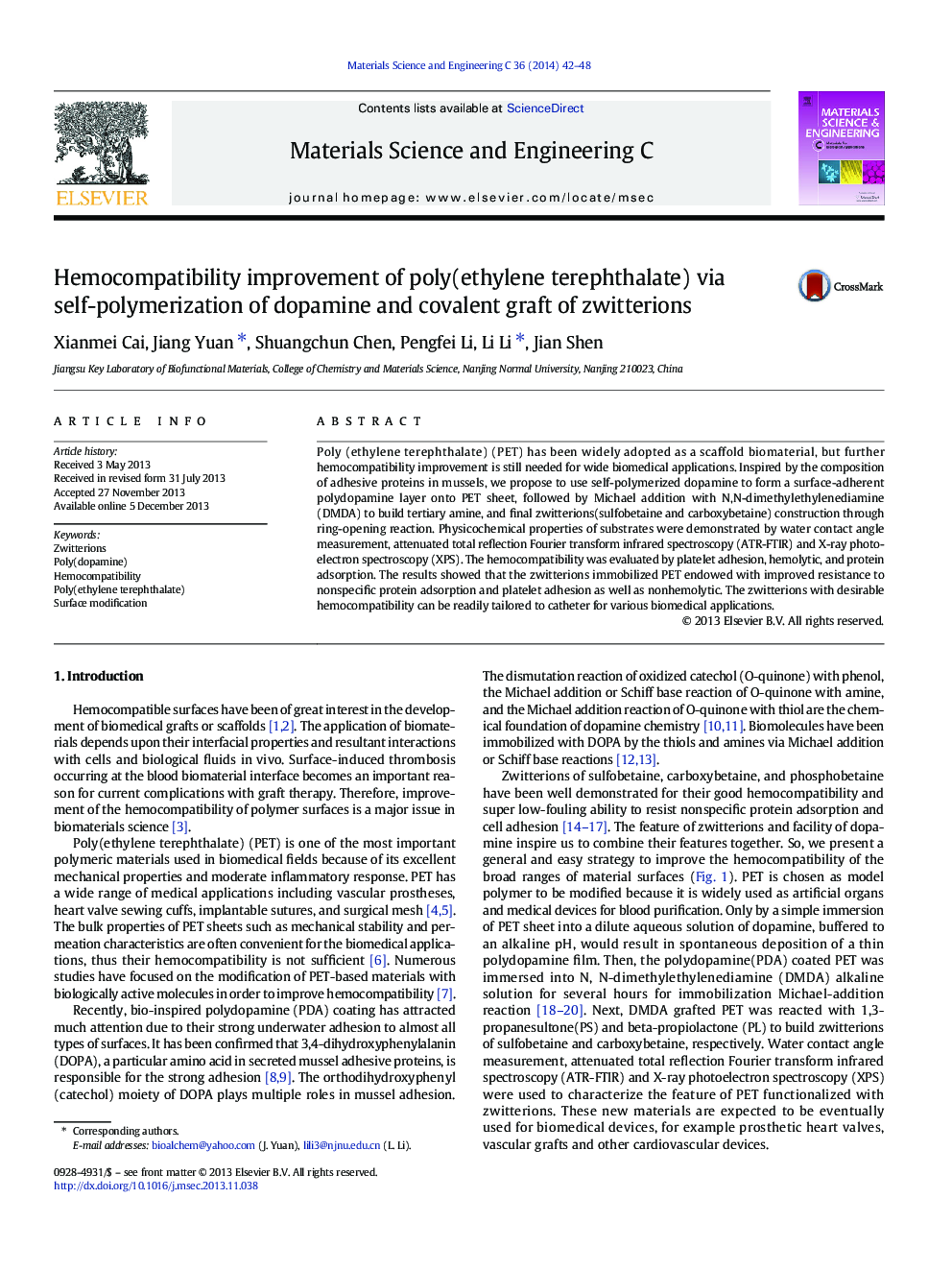| Article ID | Journal | Published Year | Pages | File Type |
|---|---|---|---|---|
| 1429219 | Materials Science and Engineering: C | 2014 | 7 Pages |
•We first used self-polymerized dopamine to form a thin and surface-adherent polydopamine layer onto PET film.•Then, DMDA was attached to the PET surface by Michael addition.•Sulfobetaine and carboxybetaine were finally constructed through ring-opening reaction.•The modify PET endowed with improved resistance to nonspecific protein adsorption and platelet adhesion.
Poly (ethylene terephthalate) (PET) has been widely adopted as a scaffold biomaterial, but further hemocompatibility improvement is still needed for wide biomedical applications. Inspired by the composition of adhesive proteins in mussels, we propose to use self-polymerized dopamine to form a surface-adherent polydopamine layer onto PET sheet, followed by Michael addition with N,N-dimethylethylenediamine (DMDA) to build tertiary amine, and final zwitterions(sulfobetaine and carboxybetaine) construction through ring-opening reaction. Physicochemical properties of substrates were demonstrated by water contact angle measurement, attenuated total reflection Fourier transform infrared spectroscopy (ATR-FTIR) and X-ray photoelectron spectroscopy (XPS). The hemocompatibility was evaluated by platelet adhesion, hemolytic, and protein adsorption. The results showed that the zwitterions immobilized PET endowed with improved resistance to nonspecific protein adsorption and platelet adhesion as well as nonhemolytic. The zwitterions with desirable hemocompatibility can be readily tailored to catheter for various biomedical applications.
Graphical abstractFigure optionsDownload full-size imageDownload as PowerPoint slide
